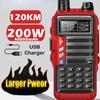Output Power(w):0.5w-3w
Waterproof / Water-Resistant:No
Storage Channel:16
Frequency Range:400-470MHz
Walkie Talkie Type:Portable
Maximum Range:≤1~10km(different type)
Certification:CE
Product size:9.1cm*5.3cm*2.5cm
Package size:15cm*10cm*5cm
Notes :
1.Please allow 1-3 cm error because measured by hand, please refer to the Sizing Chart before choosing.
2.Because the screen brightness is different, the color may be slightly off, it is normal.
Label:yes
Material: Plastic 90%,PP10%
The merchant warrants that their products comply with all applicable laws, and are offered only if they comply with Joom’s policies and EU Product Safety and Compliance laws.
Local Instructions
Interphone charging
1. Remove the dedicated walkie talkie charger, plug in (100-V-240) 50/60Hz AC power, and the green light will turn on;
2. Insert the battery pack or walkie talkie with battery pack into the charging dock; Confirm reliable contact between the battery pack and the charging dock terminal;
3. The red indicator light is on, indicating the start of charging. The charging time depends on the battery capacity. After charging, the green indicator light will turn on, indicating that the battery is fully charged.
Power on
Rotate the power/volume switch clockwise to make a "beep" sound, then report the current channel being used, and the walkie talkie enters working mode.
Adjust the volume
Press and hold the monitor button while turning the power/volume switch to adjust the volume.
Channel selection
Rotate the channel switch to select the channel you are using. If the channel switch is set to channel 16, it will automatically enter the scanning mode
PPT launch switch
When making a call, press and hold the PTT switch, the red indicator light will turn on, and speak into the microphone with a normal voice.
monitor
When the monitoring function is turned on (programmable by the computer), if no signal appears, the noise reduction circuit of the walkie talkie will automatically mute the speaker. Therefore, you will not hear background noise. To turn off the mute circuit, press and hold the Monitor [MONI] key. This operation is useful when you need to adjust the volume level or receive weak signals.
Voice message channel
This device has two voice reporting channel modes: male voice, Chinese and English combination (the channel switch must be set to the 15th channel) Turn off the device first, then hold down the PTT and listening keys, while turning on the power and continuing to hold down the function key for more than two seconds to switch to another audio mode. Convert one method every time you switch, and repeat this process. Note: In the 10th channel switch, there is a silent message, which means there is no voice message method.
Scanning function
When the channel switch is set to the 16th channel, the walkie talkie automatically enters the scanning working state. Stay on the current channel when receiving a signal, and restart scanning after the signal disappears for 3 seconds. When holding down the PTT key, if it is still in scanning mode, the frequency set for the 16th channel will be used for transmission; If the scan stops, transmit according to the current channel.
Timeout timer
The function of the timeout timer is to prevent the speaker from using one channel continuously for too long, and the walkie talkie from emitting continuously for too long, causing the body to heat up. If you continuously transmit the walkie talkie and exceed the TOT limit time set by the machine (the time can be programmed by the computer and is set to 1 minute at the factory), the walkie talkie will stop transmitting. Release the PTT switch and press it again to resume transmission.
Battery saving
If the walkie talkie does not receive a signal or has no operation for more than 5 consecutive seconds, it will automatically enter a power-saving state.
Low battery warning
When the battery voltage drops to the predetermined value, a "beep beep, please charge" prompt sound will sound every 10 seconds, indicating that the battery needs to be replaced or charged.
Analog Sub Audio (CTCSS) and Digital Sub Audio (DCS)














































